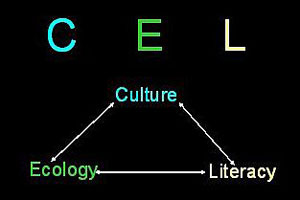
- Barclay-McLaughlin, G., Kershaw, C. & Roberts, D. (2007). Cultural autobiographies and oral histories. Theory Into Practice, 46(3) 222-229.
- Barclay-McLaughlin, G., & Hatch, J. A. (2005). Studying across race: A conversation about the place of difference in qualitative research. Contemporary Issues in Early Childhood, 6(3) 216-232.
- Hatch, J. A., & Barclay-McLaughlin, G. (2006). Qualitative research: Paradigms and possibilities. In B. Spodek & O. Saracho, Handbook of research on the education of young children, 2nd Edition. (pp. 497-514 ) Mahwah, NJ: Lawrence Erlbaum.
- Benner, S., & Barclay-McLaughlin, G. (2005). Simultaneous curricular reform in urban education and teacher preparation: A partnership approach. Teacher Education and Practice. 18(1), 96-112.
- Bohon, S.A., Kirkpatrick Johnson, M., & Gorman, B.K. (2006). College expectations and aspirations among Latino adolescents in the United States.” Social Problems 52(2), 207-225.
- Bohon, S. A., MacPherson, H & Atiles, J.H. (2005). Educational barriers for new Latinos in Georgia. Journal of Latinos and Education 4(1), 43-58.
- Stamps, K. & Bohon, S.A. (2006). Educational attainment in new and established Latino metropolitan destinations.” Social Science Quarterly 87, 1225-1240.
- Brown, C. L. (2009). Heritage Language and Ethnic Identity: A Case Study of Korean-American College Students. International Journal of Multicultural Education, 11(1), 1-16
- Krashen, S., & Brown, C. L. (2005). The ameliorating effects of high socioeconomic status: A secondary analysis. Bilingual Research Journal, 29(1), 185-196.
- Brown, C. L. (2004). Reducing the Over-Referral of Culturally and Linguistically Diverse Students for Language Disabilities. NABE Journal of Research and Practice, 2(1), 225-243.
- Davis, J., & McKay-Cody, M. (2013). Signed languages and American Indian
communities: Considerations for interpreting work and research. In R. McKee, & J. Davis (Eds.), Sign Language Interpreting in Multilingual and Multicultural Contexts; Studies in Interpretation, Volume 5 (pp. 1 – 50). Washington, DC: Gallaudet University Press. - Davis, J. (2007). North American Indian sign language varieties: A comparative linguistic assessment. Sociolinguistics in Deaf Communities, 13, 85 – 122.
- Davis, J. (2005). Working with sign language interpreters in human service settings. Human Service Education, 25, 41 – 52.
- Plains Indian Sign Language: Fieldwork and Digital Archive Project (2009 – 2010)
National Science Foundation, Division of Linguistics, Cognitive Sciences, and Cultural Anthropology, Documenting Endangered Languages Program ($100,365.00 awarded) - Ready for the World: College of Education, Health, & Human Sciences, International and Intercultural Initiative (2007 – 2008). Window to Tibet: An Exploration of Tibetan Religion, Culture, and Music (Spring 2007). Travel to China and Tibet with a group of international scholars for six-weeks to teach English to rural Tibetan school children (Summer 2007). Visiting scholar, Applied Linguistics Program at Victoria University Wellington, New Zealand (Summer 2008) ($5,000 awarded)
- Plains Indian Sign Language: Developing a digital archive of Smithsonian collections
(2006 – 2007) Research fellowship from the National Endowment for the Humanities and National Science Foundation’s Documenting Endangered Languages Program ($40,000.00 awarded)